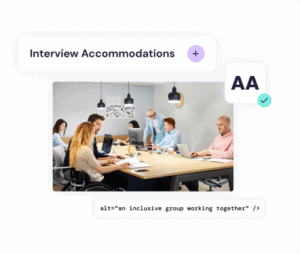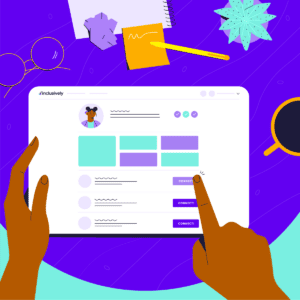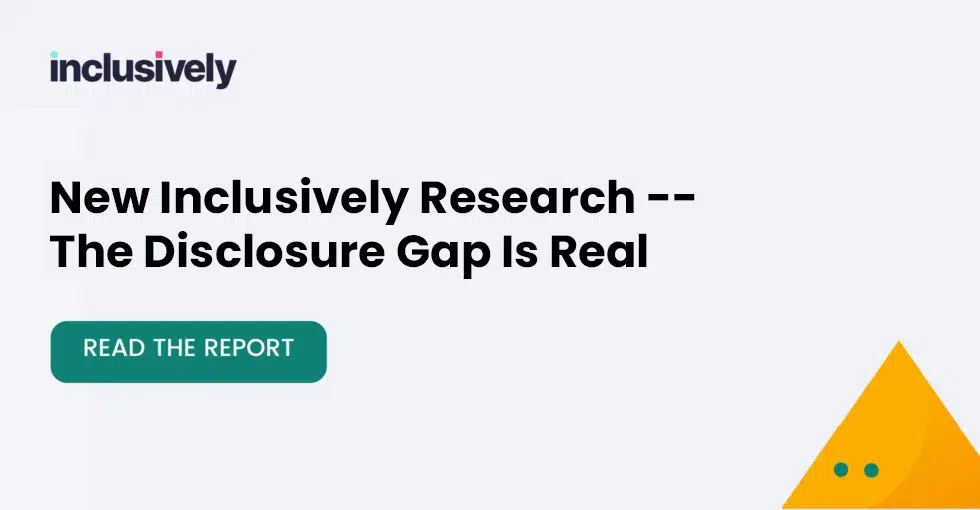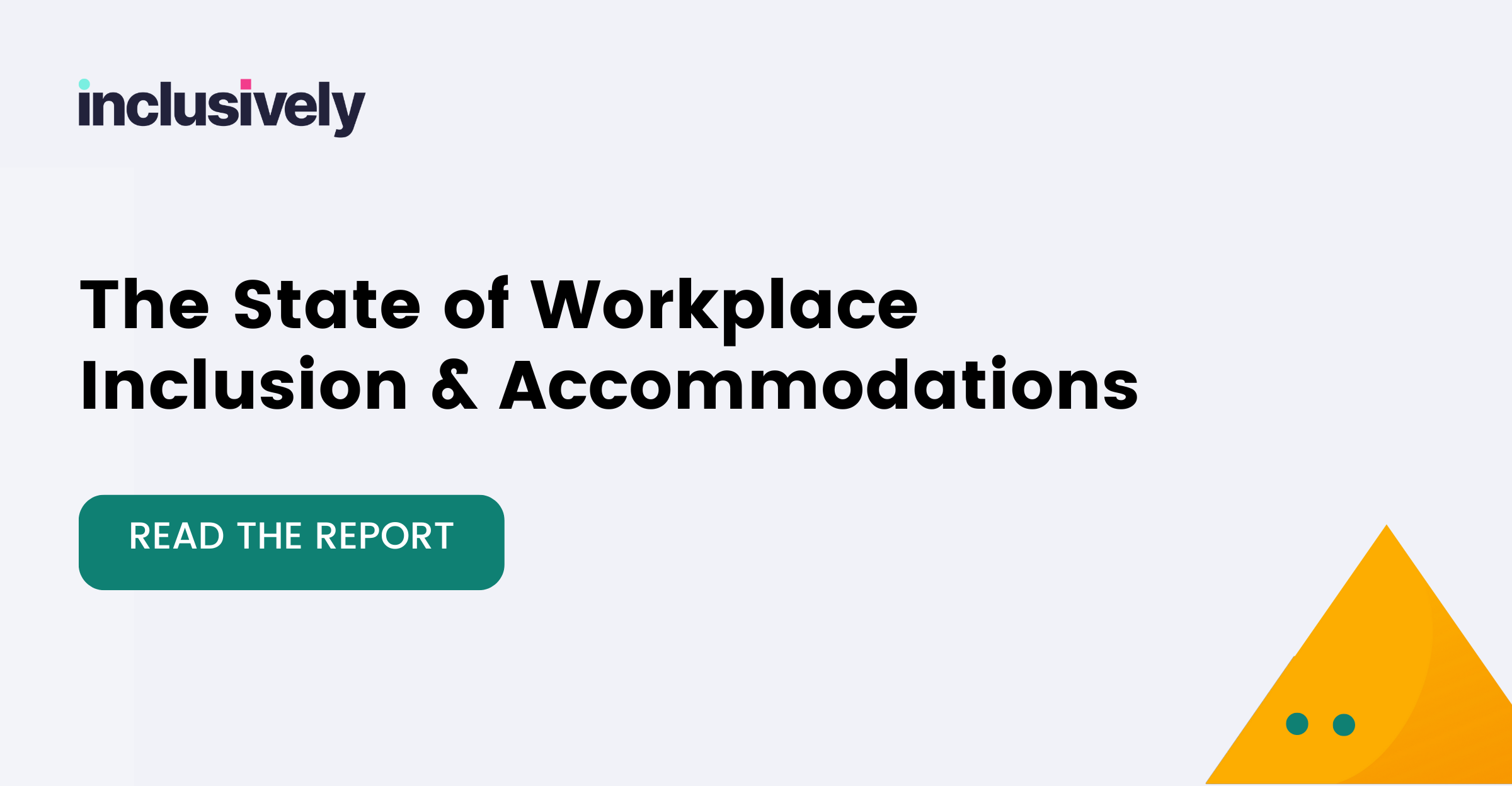Learn how the Inclusively platform is built and maintained with accessibility at the forefront
What is web accessibility and why does it matter?
By: Aubrey Northam, Software Developer
Whether you are a business with an online presence or, hopefully, an individual who has used the internet in the last 20 years, by now there’s no doubt you have heard about web accessibility. But what exactly is at stake when we talk about accessible websites … who is this topic for actually? Consider if any of the following are relevant to you:
- Marketing your company or product online without facing ADA lawsuits
- Expanding your business’s reach to the widest online audience possible
- Being able to enjoy an optimized web experience regardless of your web browser, your screen reader, your age, or your physical and cognitive abilities
To put it simply, web accessibility is relevant to us all because it is for everybody. Equal access to content and services online – across every corner of the internet – is a fundamental right protected by the ADA, Section 508, and upheld by countless legal rulings in recent years. Plus, it’s just common sense: we expect accessibility accommodations in the physical spaces we inhabit, why should we accept less than the bare minimum in online spaces?
Shouldn’t our digital spaces be just as accessible as our physical spaces?
Being compliant vs. being inclusive
It’s worth stating that comprehensive accessibility compliance (WCAG is the industry standard) is not quick and easy. A lot of web platforms fall short, either because it’s too intimidating to get started or because of lack of time and resources. Don’t let perfect be the enemy of good! The most prevalent compliance issues can often be some of the most low-effort programming fixes, for example:
- Insufficient contrast ratio for text and UI controls
- Missing alt text on images
- Missing labels for form elements
Remediating the low-hanging fruit goes a long way towards improving compliance results. But when addressing larger sites with more complicated user interfaces, new accessibility issues often crop up, and the gap between “perfectly compliant” and “good enough” might suddenly seem more like a canyon. At Inclusively, we set out with the goal of building a platform that could be accessed equally by the widest range of users. The platform we envisioned would need to be not just compliant, but truly inclusive.
Wait, is there a difference?
Yes! Like many companies faced with the goal of accessibility compliance, we considered the option of an AI keyboard plugin – you might recognize them as the floating corner widgets that are popping up on websites for major brands and retailers, offering a menu of accessibility-related site modifications. They’re fairly prevalent, and the appeal is understandable. It shows a business has demonstrated compliance effort without having to spend resources on redesigns, testing, or modify any website code at all. If it seems too good to be true, it’s because this compliance solution is primarily a service for the business (protecting against lawsuits) rather than a service for consumers to access content on their own terms with their own assistive tools. Better than nothing? Probably! But not the inclusive approach we had in mind.
Being compliant and being inclusive are not always mutually exclusive
Accessibility at the source code level
Instead of a quick fix or a one-size-fits-most solution, our approach for the Inclusively platform is to provide the same quality experience for all users regardless of their preferred methods of interaction. Rather than relying on plugins, overlays, or other automations, the most comprehensive way to reach our goal is ensuring we meet compliance standards at the source code level. This may seem like an isolated concern for the tech department, but this is a full team effort! It is critical to plan for accessibility during the design and strategy stages which sets the foundation for everything that follows. With every new feature we roll out to the Inclusively platform, our team is learning and improving source code accessibility, for example:
- Customizing an image-upload tool for VoiceOver users
- Improving tab focus for keyboard users navigating complex filter menus
- Providing forms with instructional guidance and also dynamic logic to help users avoid and correct mistakes
Since our platform is always evolving, this is an ongoing effort, but there’s no secret sauce. Just testing, more testing, and then a lot more testing.
Finding great partners
Speaking of testing …
Anyone who has dabbled in quality assurance testing can agree that even traditional web testing (for browser compatibility, across various devices, operating systems, etc) can be tough on timelines. Consider testing against a full suite of screen reader tools and assistive tech, and the task can seem virtually impossible without access to the right resources.
As a team, Inclusively seeks out the best practices and resources for our web platform, and part of that effort led to a new partnership with Knowbility! We are grateful to partner with Knowbility for their testing capabilities, hands-on technical feedback, and industry expertise. Comprehensive user testing provides value far beyond what automated audits can provide alone, and Knowbility works alongside our team to make the process of testing and remediation seamless.
Ongoing efforts
We’re also excited to announce that Inclusively has partnered with Be My Eyes to improve our usability among blind and low vision candidates. As part of this new initiative, Be My Eyes users will be able to share their usability feedback through their app directly with our team.
Inclusively’s greatest asset is our incredibly diverse userbase – they provide unique feedback and keep our team motivated to always be improving the platform. As Inclusively grows to reach bigger audiences and offers more features for our users, maintaining a fully accessible user experience remains a top priority. We’ve learned that creating an inclusive web experience shouldn’t be viewed as a finish line to cross. It’s an ongoing effort, and we’re thankful for each of our amazing users and partners who have joined us at every step of the way.
If you are an inclusive company or a job-seeking candidate ready to connect with your next job, we invite you to join us!




